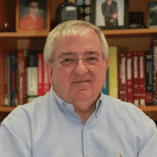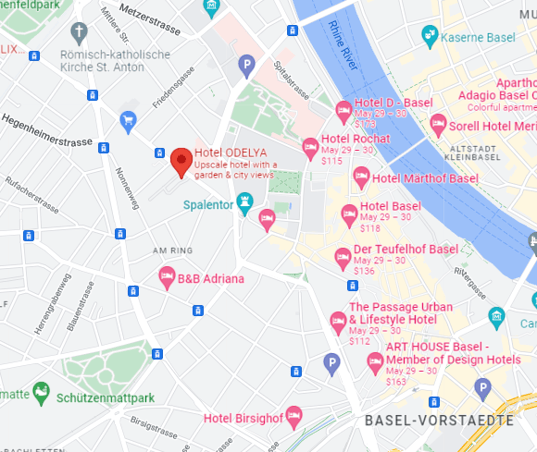Register Now
Innovative Models for ADME-Tox Research
Improve IVIVC Predictions with Long-term and Whole-cell Hepatocyte Models
Basel, Switzerland
Wednesday, 22-June-2022
10:00 to 16:00 (UTC+2)
You are invited to attend our complimentary symposium on the theory and applications of long-term, whole-cell hepatocyte models, including HEPATOPAC® cultures, spheroids and SCHH. These model systems incorporate metabolism, regulatory, and transporter function to better recapitulate the in vivo condition.
- Learn how your peers are using HEPATOPAC technology and 3D cultures
- Discover ideas that you can use in your research
- Uncover opportunities for collaboration
- Network with industry colleagues
Read more detail about the presentations in each session by visiting the agenda tab.
Registration is required to attend.
Coffee and Morning Networking – 10:00 - 10:30 am
Morning Sessions – 10:30 am – 12:30 pm
The HEPATOPAC Long-Term Liver Model: Applications in Drug Discovery and Development
Speaker: Scott Heyward, Director of Research and Development, BioIVT
The Use of HEPATOPAC for Estimation of Fraction Metabolized by Cytochrome P450 (CYP) Enzymes
Speaker: Kenichi Umehara, PhD, Senior Principal Scientist, Roche Pharmaceutical Research
Primary Human Hepatocyte Spheroids as an In Vitro Tool for Investigating Drug Compounds with Low Hepatic Clearance
Speaker: Julia Riede, PhD, Principal Scientist, Novartis
Lunch 12:30 - 2:00 pm
Afternoon Sessions – 2:00 – 3:30 pm
Regulation of Transporter Expression and Function in Polarized Hepatocyte Models
Speaker: Kenneth R. Brouwer, PhD, RPh, Vice President of Technology, ADME-Tox, BioIVT
Organic Solute Transporter (OSTα/β) as a Bile Acid and Drug Transporter
Speaker: Melina Malinen, PhD, Senior Scientist, Orion Corporation
Coffee and Networking – 3:30 – 4:00 pm
Abstracts
The HEPATOPAC Long-Term Liver Model: Applications in Drug Discovery and DevelopmentSpeaker: Scott Heyward, Director of Research and Development, BioIVT
The HEPATOPAC culture model, a bioengineered long-term differentiated hepatocyte culture, has been used extensively in drug development to answer questions around drug toxicity and metabolism. New applications for this model that provide utility in drug discovery continue to be developed and validated. Development of a steatosis model which recapitulates many aspects of the development of fatty liver disease in vitro has been built to aid in target discovery and therapeutic screening. The ability to alter expression of individual genes utilizing siRNA has been optimized in HEPATOPAC bringing this powerful technology to a long-term hepatic culture model. We will present data that highlights the intersection of these applications and look to HEPATOPAC’s future.
Speaker: Kenichi Umehara , PhD, Senior Principal Scientist, Roche Pharmaceutical Research
Estimation of the fraction of a drug metabolized by CYPs relative to hepatic metabolism (fm,CYP) has been challenging for low clearance compounds. Inhibition of drug depletion or selective metabolite formation for marker CYP substrates was investigated using chemical inhibitors and HEPATOPAC. In particular the use of 3 µM itraconazole was successfully validated for estimation of fm,CYP3A4 by demonstration of fm values within a 2-fold of in vivo estimates for 10 out of 13 CYP3A4 substrates. The approach can result in an improved fm estimation and can support a victim drug-drug interaction risk assessment for low clearance compounds.
Speaker: Julia Riede, PhD, Principal Scientist, Novartis
Traditional in vitro systems often fail to predict the hepatic clearance of slowly metabolized drug compounds due to their relatively short stability. This study demonstrates the ability of primary human hepatocyte spheroids to provide accurate projections on the hepatic clearance of drug compounds with low and intermediate clearance.
Speaker: Kenneth R. Brouwer, PhD, RPh, Vice President of Technology, ADME-Tox, BioIVT
Bile acid transport is highly regulated both in vivo and in vitro through FXR. We have evaluated the effects of FXR agonists and bile acid efflux inhibitors on the hepatobiliary disposition of exogenous and endogenous bile acids in a sandwich-cultured human hepatocyte model optimized for synthesis and metabolism of endogenous bile acids. Inhibition of bile acid efflux can lead to activation of FXR, decreased synthesis of endogenous bile acids, and upregulation of basolateral efflux transporters (e.g. OSTs). The importance of this adaptive process in drug-induced liver injury (DILI) where the disruption of bile acid homeostasis has been postulated to be a major DILI mechanism will be discussed.
Organic Solute Transporter (OSTα/β) as a Bile Acid and Drug Transporter
Speaker: Melina Malinen, PhD, Senior Scientist, Orion Corporation
Organic solute transporter alpha/beta (OSTα/β) is a solute carrier protein that is expressed in various tissues with the highest expression in the gastrointestinal tract where it facilitates the recirculation of bile acids. Interestingly, the expression of OSTα/β is highly upregulated in the liver in conditions characterized by elevated bile acid concentrations and/or inflammation. Some drugs have been identified as OSTα/β substrates or inhibitors, troglitazone sulfate, a metabolite of troglitazone, being one. The recent studies on the function, substrates and inhibitors of this bidirectional transporter will be discussed.
 Scott Heyward, Director of Research and Development, BioIVT
Scott Heyward, Director of Research and Development, BioIVT
Scott Heyward is the Director of Research and Development at BioIVT for hepatic products in our ADME-Tox division. His focus is on both new product development as well as support of application development for our existing products. He provides support to customers who need help developing new model systems or resolving an issue with established applications. Prior to joining BioIVT, Scott worked in a number of academic institutions in a diverse set of biological areas spanning developmental biology, gene therapy, and virology, with a focus on hepatotropic viruses. He continues to work across diverse functions, incorporating pharmacogenomics, liver non-parenchymal biology and long-term hepatocyte culture systems into predictive ADME-Tox models.
 Kenichi Umehara, PhD, Senior Principal Scientist, Roche Pharmaceutical Research and Early Development
Kenichi Umehara, PhD, Senior Principal Scientist, Roche Pharmaceutical Research and Early Development
Kenichi Umehara is a Senior Principal Scientist in the ADME group at Roche Pharmaceutical Research and Early Development. He works for translation of the in vitro PK/DDI results into PBPK models to understand the human situation supporting from drug discovery to late development stages. After having worked in Astellas Pharma, Kenichi joined Novartis and contributed to the establishment of in vitro - in vivo extrapolation methods of hepatic clearance incorporating transporters and metabolic enzymes. Before starting the position at Roche, he was involved in the in vitro enzyme reaction phenotyping to perform DDI risk assessments with PBPK modeling.
 Julia Riede, PhD, ADME Scientist, Novartis
Julia Riede, PhD, ADME Scientist, Novartis
Julia Riede is an ADME Scientist at Novartis, working in the Pharmacokinetic Sciences department. She is responsible for in vitro permeability, drug transport and metabolism studies for small and large molecules. In addition, Julia is involved in the implementation of complex cellular models and serves as ADME expert throughout the translational drug development phases. Before joining Novartis in 2020, Julia obtained her PhD from the University of Basel, Switzerland and conducted her postdoctoral research in toxicology and pharmacogenomics at the Karolinska Institute in Stockholm, Sweden.
 Kenneth Brouwer, PhD, RPh, Vice President of Technology - ADME-TOX, BioIVT
Kenneth Brouwer, PhD, RPh, Vice President of Technology - ADME-TOX, BioIVT
Kenneth Brouwer is Vice President, ADME Tox Research at BioIVT. A pharmacologist by training, Dr. Brouwer has led in vitro ADME programs at GSK and at PPD. He later led development of B-CLEAR technology, a method to quantitate hepato-biliary excretion. He was a founder of Qualyst Transporter Solutions, where he expanded applications of B-CLEAR technology and developed assays that integrate uptake, efflux, and regulatory function of cells. In 2017, BioIVT acquired Qualyst, and Dr. Brouwer now helps biopharmaceutical clients design and implement in vitro ADME research programs to achieve their drug R&D and regulatory submission objectives.
 Melina Melinen, PhD, Senior Scientist, Orion Corporation
Melina Melinen, PhD, Senior Scientist, Orion Corporation
Melina Malinen, MS, PhD, is a Senior Scientist at Orion Corporation, where she is involved in the implementation and design of in vitro toxicology research, with a focus on drug-induced liver injury. Dr. Malinen is a licensed pharmacist with extensive research experience, conducting studies in drug and bile acid transport and toxicology, and development of hepatic in vitro models. She completed her PhD in Biopharmacy at the University of Helsinki, post-doctoral training at the University of North Carolina and Marie Skłodowska-Curie fellowship at the University of Eastern Finland before joining Orion Corporation in 2019.




